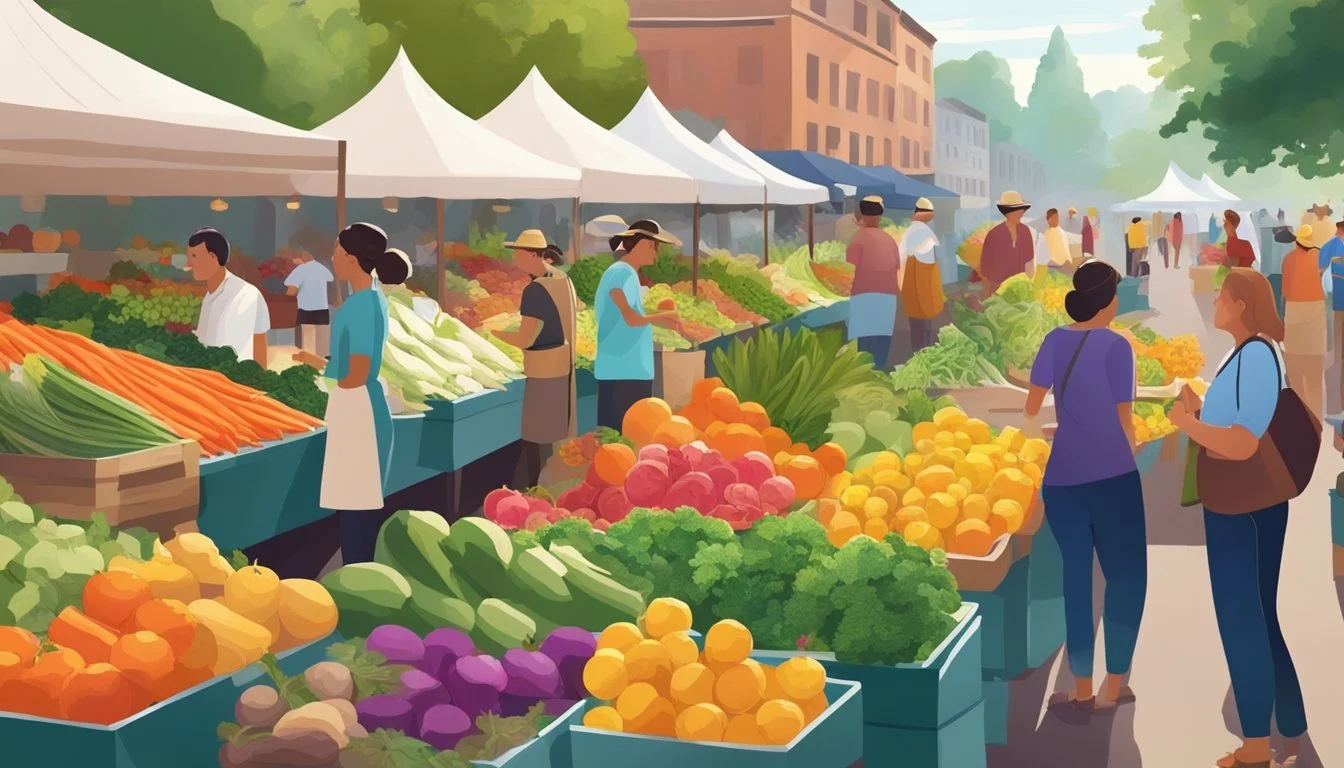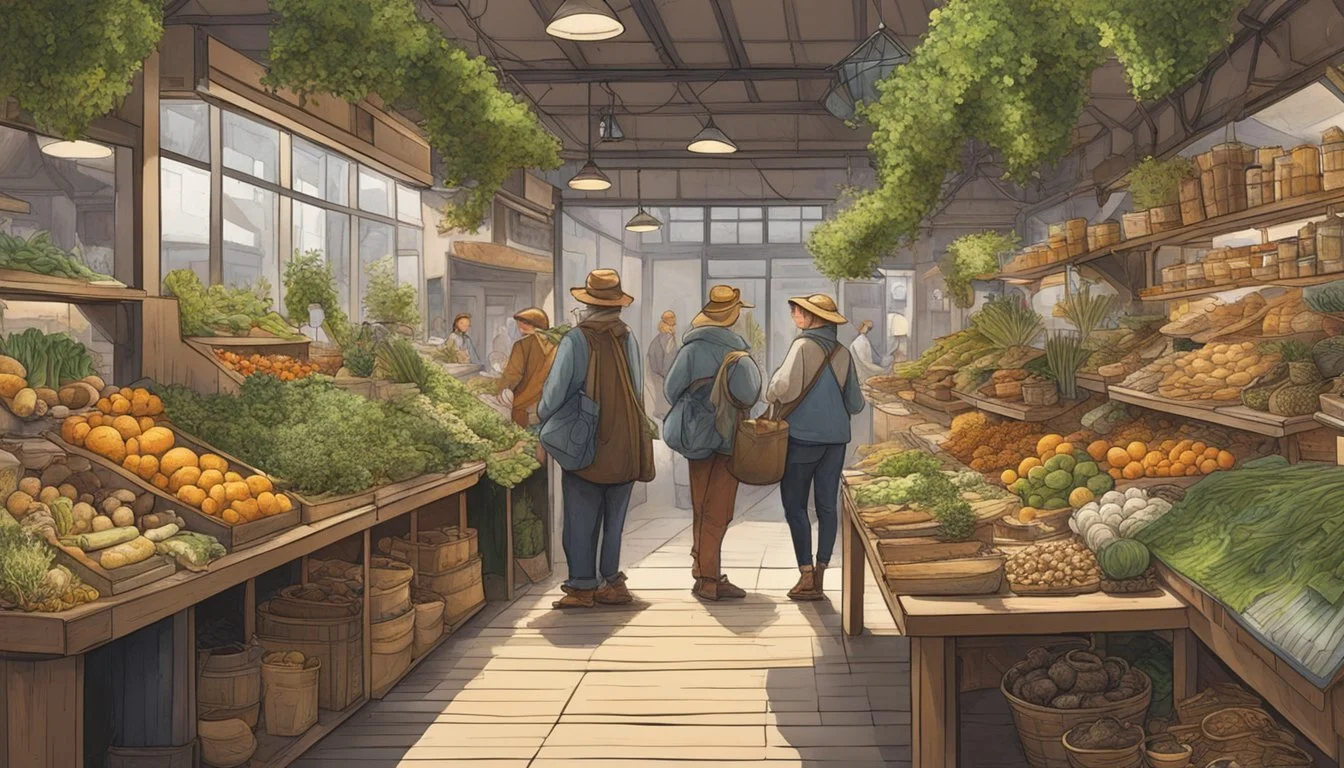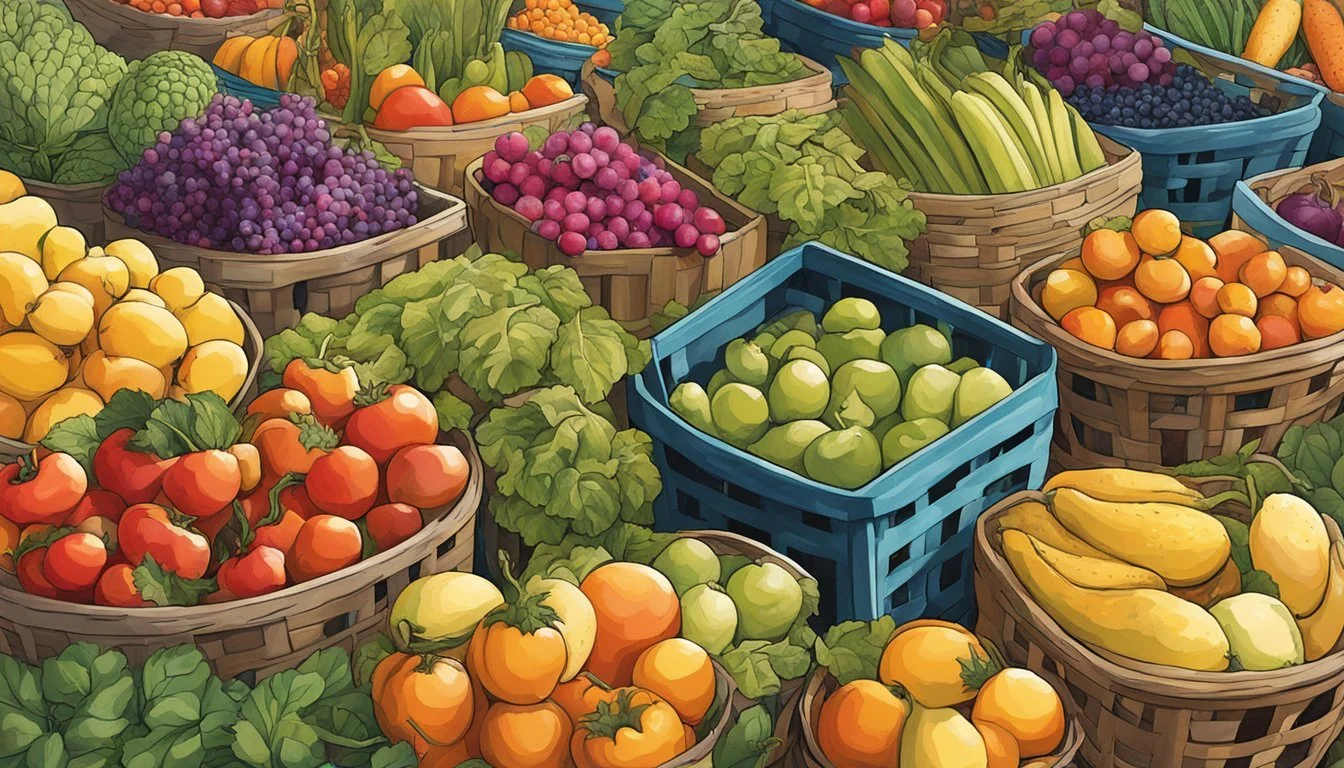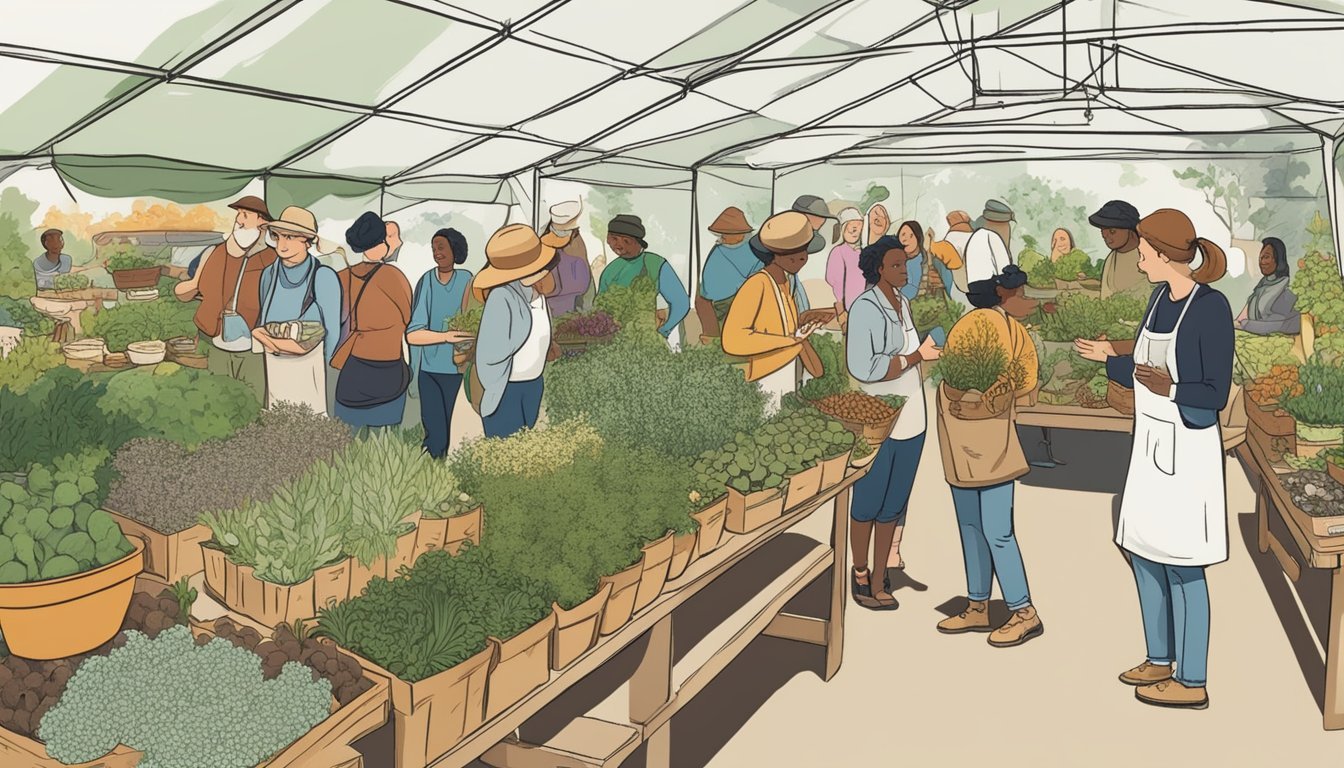The Beginner's Guide to Foraging at the Farmers' Market
Smart Shopping Strategies
Foraging at farmers' markets offers a unique opportunity to explore local and wild food sources in an accessible environment. As the intersection of nature's bounty and community gathering, farmers' markets allow beginners to forage for fresh, seasonal produce while engaging with knowledgeable vendors and fellow food enthusiasts. This practice emphasizes the importance of sustainability and supports the local economy, creating a direct link between the consumer and the source of their food.
The concept of foraging typically conjures images of wandering through forests and meadows, yet a farmers' market provides a curated experience for individuals to discover wild edibles. Vendors at these markets often carry an array of locally foraged goods ranging from wild herbs to mushrooms, offering a taste of wild food without the need for extensive wilderness survival knowledge. This environment serves as an educational platform where beginners can ask questions, learn about the origins of their food, and develop an appreciation for the local flora.
As a beginner foraging at a farmers' market, one can expect to be introduced to a variety of wild and cultivated foods, learning to identify them and understand their uses in cooking and herbal medicine. This practical knowledge paves the way for making informed, ethical choices about foraging and consuming wild foods. Moreover, these markets often become a hub for community-based foraging workshops and classes, enabling novice foragers to expand their skills and connect with like-minded individuals who share an appreciation for natural, wholesome food.
Getting Started with Foraging
Foraging at the farmers' market begins with understanding what to look for and how to do it responsibly. This guide is structured to equip you with the foundational knowledge and skills necessary to begin your foraging journey with confidence.
Understanding the Basics of Foraging
Foraging involves searching for and harvesting wild food resources. It includes a variety of edibles such as berries, herbs, mushrooms, and greens like dandelion leaves, which are high in iron. When foraging, it's essential to identify these resources correctly and know when they are in season.
Identifying Edible Plants and Mushrooms
Accurate identification is crucial in foraging to avoid consuming poisonous plants or mushrooms. Using a reliable field guide and cross-referencing multiple sources can help distinguish between edible plants like nettles and blackberries and inedible ones.
Equipment Essentials for Foraging
When heading out, equip yourself with some basic tools: a sharp knife for cleanly cutting plants, gloves to protect your hands, a basket or cloth bags for carrying your finds, and comfortable clothing suitable for hiking through various terrain.
Forage with Safety in Mind
Always prioritize safety by following foraging rules to avoid pesticides and poisonous plants. It's important to use all your senses when foraging, and when in doubt, do not consume any foraged item.
Legal and Ethical Considerations
Be aware of local regulations regarding foraging, especially concerning private property and protected areas. Embrace sustainable foraging practices like "leave no trace" to minimize your impact on the wildlife and local ecosystems.
Learning Resources and Expert Guidance
New foragers should consider acquiring a guidebook or joining foraging classes led by experts. Gaining knowledge from a mentor or local foraging groups is beneficial.
Seasonal Foraging Guide
Understand the seasons when different plants and mushrooms are available. For instance, pine and fir may be gathered in late winter, while wildflowers and dandelions can be foraged during spring.
Benefits of Foraging
Foraging offers numerous benefits, providing sustenance, medicine, and an opportunity for survival training. It also encourages a connection to the land and has dietary benefits through the addition of wild foods to one's diet.
Foraging as a Family Activity
Engaging in foraging as a family fosters a sense of community and teaches children about nature and sustainable practices. It can be a fun and educational experience for all ages.
Foraging for Specific Ecosystems
Different ecosystems—from forests to fields, deserts, and even urban environments—offer unique foraging opportunities. It's essential to learn and understand the local ecosystems you plan to explore to find the best spots for foraging.
Exploring the Farmers' Market
The Farmers' Market offers a treasure trove for those interested in foraging, presenting an opportunity to discover regional specialties and form connections that benefit one's foraging endeavors.
Why Foragers Should Visit Farmers' Markets
Farmers' markets serve as a hub for local produce, where foragers can unearth ingredients such as honey, mint, and elderberries that might not be readily available in the wild. These markets allow foragers to supplement their wild finds with fresh, organic produce that echoes the natural flavors they cherish.
Selecting the Best Ingredients
When navigating the markets, savvy foragers seek out lamb’s quarters—a wild edible often found alongside other greens. They prioritize ingredients that complement their foraged items, such as fresh milk to pair with wild berries or organic flour for making bread to serve with foraged fruit jams.
Key ingredients to look out for:
Lamb’s quarters
Fresh, local honey
Organic mint varieties
Fresh dairy like milk
From Foraged Goods to Market Stalls
Occasionally, foragers transition into vendors, offering their wild foods at the market. The community benefits from this exchange, gaining access to wild foods and recipes previously unknown. This allows individuals who typically forage as a hobby to share their bounty with the larger community.
Building Relationships with Local Vendors
Establishing rapport with vendors is crucial; they often possess a wealth of knowledge on local food systems. This community building allows foragers to learn about the origins of market goods, compare them with wild counterparts, and even discover potential foraging spots through conversations.
Integrating Market Finds with Foraged Food
By combining farmers' market finds with foraged items, foragers can expand their culinary repertoire. They might pair market-bought fruits with freshly-picked elderberries to create novel jams, or use wild mint to enhance lemonade purchased from the market. This interplay elevates meals, turning them into a testament to the bountiful nature of their region.
Example pairings:
Foraged elderberries with market-bought apples for jams
Wild mint with market-sourced lemons for refreshing drinks
Market dairy and foraged berries for desserts
Foraging Field Identification
Foragers at farmers' markets often look for wild edibles that offer a unique flavor addition to their kitchens. A proper understanding of foraging field identification ensures that one can safely recognize and harvest wild plants.
Commonly Foraged Wild Plants
When foraging for wild plants, individuals frequently seek nettles, dandelion, plantain, and fiddlehead ferns. Nettles, with their serrated leaves, are easily identifiable and favored for their nutritional value. Dandelions are widespread, recognized by their yellow flowers and toothed leaves. Plantain has broad leaves forming a rosette and is known for its medicinal properties. Fiddlehead ferns, which are the furled fronds of young ferns, are picked for their unique taste and texture.
Dandelion: Taraxacum officinale
Nettles: Urtica dioica
Plantain: Plantago major
Fiddlehead Ferns: Matteuccia struthiopteris
Identifying Trees and Bushes
Trees and bushes like pine, fir, juniper, and blackberries provide a range of forageable materials from fruits to needles. Pines are identified by their needle-like leaves and cones. Fir trees can be recognized by their softer needles and unique conical shape. Juniper bushes bear berry-like cones used in culinary applications. Blackberries are known for their compound leaves and thorny stems, bearing juicy fruits.
Tree/Bush Identification Feature Common Use Pine Needle-like leaves Edible seeds, needles for tea Fir Soft needles, conical shape Edible needles Juniper Berry-like cones Culinary spice Blackberries Compound leaves, thorny stems Fruit foraging
Mushroom Hunting Essentials
Foragers must approach mushroom hunting with caution, prioritizing safety through accurate identification. Morel mushrooms, easily distinguishable by their honeycomb-like appearance, are prized for their flavor. Chanterelle mushrooms, with their golden hue and ruffled edges, are equally sought after. It is imperative that foragers consult field guides and attend plant walks with experts to avoid toxic look-alikes.
Morel Mushrooms: Distinct honeycomb cap
Chanterelle Mushrooms: Golden color, ruffled edges
Foraging Wild Herbs and Medicinal Plants
Wild herbs such as nettle, rose hips, and wild spinach are often foraged for both their culinary and medicinal properties. Herbalists recommend using a guidebook to differentiate between similar-looking species accurately. Nettles are harvested for their leaves, while rose hips (the fruit of wild roses) are valued for their high vitamin C content. Wild spinach, or lamb's quarters, is easily recognized by its diamond-shaped leaves and is a nutritious leafy green.
Herb Identification Usage Nettle Serrated leaves, stinging hairs Soups, teas Rose Hips Red/orange spherical fruit Vitamin C-rich teas, syrups Wild Spinach Diamond-shaped leaves, grey-green color Salads, cooked greens
Advanced Foraging Techniques
As foragers progress beyond the basics, they develop sophisticated methods that maximize their harvests while respecting the environment. Advanced foraging techniques take into account the diverse environments foragers may encounter and utilize modern technology to aid in identification and collection of wild foods.
Urban Foraging Strategies
Urban environments offer a unique set of opportunities for foragers. Samuel Thayer, an authority on wild edibles, suggests using regional field guides to identify local species. Foragers should keep an eye out for edible plants that thrive in urban landscapes, such as dandelions and purslane. Asphalt and concrete can create microclimates that affect plant growth, so understanding these dynamics is crucial. Briana Wiles, an author of foraging books, emphasizes the importance of being mindful of pollutants and avoiding plants from areas that might be contaminated by traffic or industrial waste.
Foraging in Various Terrains
Different terrains require varied approaches to foraging. When foraging in fields, look for open-area species like wild berries. Forests are ideal for mushroom foraging, but knowledge of toxic species is essential — only harvest mushrooms that are positively identified. In desert regions, focus on cacti and succulents that can be safely consumed but be wary of conservation laws as certain plants like the yew might be protected.
Fields: Wild berries, greens, edible flowers.
Forests: Safe mushrooms, tree nuts, ferns.
Desert: Cacti, agave, mesquite pods.
Using Technology to Enhance Foraging
The internet is a treasure trove of foraging information. Foragers can access field guides online that provide detailed descriptions and images of edible species. They can also join Facebook groups or forums dedicated to regional foraging to share experiences and seek advice. Mobile apps can offer GPS marking for found edibles, and some even provide image recognition to suggest possible matches for plants.
Wildcrafting and Creating Homemade Products
Wildcrafting goes beyond simple foraging; it involves harvesting plant materials for crafting items or medicine. Advanced foragers may create elderberry syrup for its health benefits. It is crucial to harvest sustainably, taking only what is needed and leaving plenty for natural regeneration. Wildcrafting requires a deep knowledge of plants' medicinal properties and should be carried out with respect for local regulations and conservation efforts.
Foraging Workshops and Community
Jumpstarting a foraging journey often begins with tapping into established networks and educational resources. Workshops and community groups provide indispensable knowledge on sustainable foraging practices, ensuring fledgling foragers begin on the right foot.
Local Workshops and Plant Walks
Local workshops provide hands-on experience, often taking place on hiking trails known for their rich biodiversity. Participants receive guidance on identifying edible plants using a field guide, avoiding areas treated with herbicides, and learning sustainable harvesting methods. Plant walks foster a deeper connection with nature and offer practical teaching in a natural setting.
Joining Foraging Groups and Forums
Foraging groups and forums, particularly on platforms like Facebook, act as hubs for enthusiasts to share experiences and advice. They facilitate community building and often post updates on upcoming workshops and field walks. By joining these groups, individuals gain access to a shared pool of regional foraging expertise.
Learning From Regional Foraging Experts
Local foraging experts are invaluable mentors offering region-specific guidance. Seeking out these experts through workshops or online forums can accelerate a beginner’s learning curve. Experts provide nuanced insight that surpasses what one might learn independently, such as specific plant identification and ethical foraging practices.
Contributing to Foraging Research and Knowledge
Contributing observations and findings to foraging research and community knowledge bases is a way of giving back. It helps build a collective understanding of plant species and their growth patterns. Engaging in research initiatives not only broadens individual understanding but also benefits the wider foraging community.





